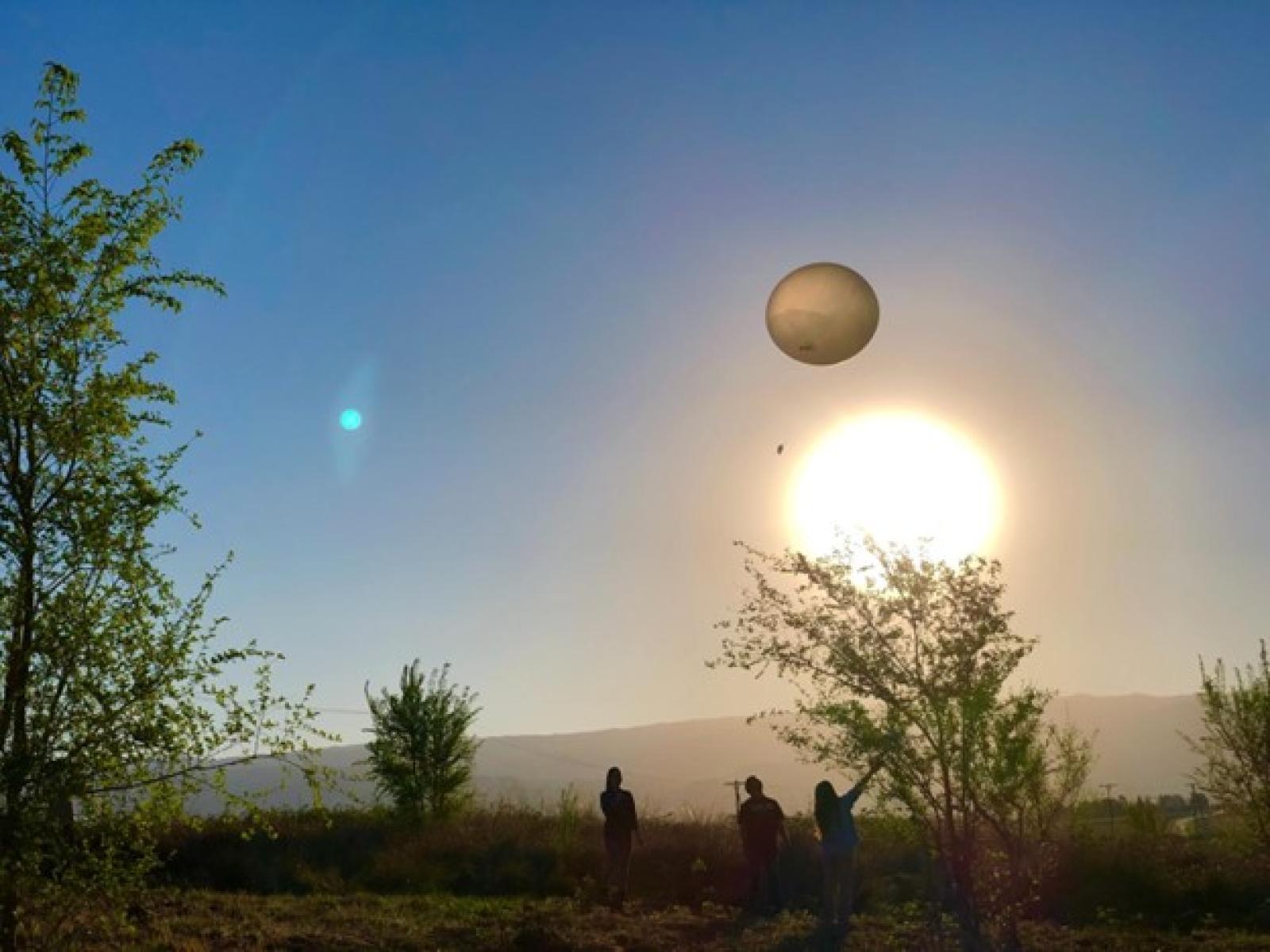The Meteorological Conditions that Promote Deep Cloud Growth
Assessing observed weather conditions that support or suppress the growth of clouds into deep precipitating storms during the Cloud, Aerosol, and Complex Terrain Interactions experiment

Scientists launch a radiosonde weather balloon to observe temperature, humidity, and wind conditions in Argentina.
(Photo: Atmospheric Radiation Measurement user facility)
The Science
Warm, humid, and unstable weather conditions are required for cumulus clouds to grow into thunderstorms. However, storms often fail to form despite seemingly favorable conditions. Researchers examined meteorological data from weather balloons launched near hundreds of developing thunderstorms and in periods of seemingly favorable conditions when storms did not develop during the Cloud, Aerosol, and Complex Terrain Interactions (CACTI) field experiment. They used these data to differentiate the weather conditions and physical processes controlling thunderstorm formation. They found that the surrounding relative humidity, the ability of the background environment to locally lift and moisten air, and interactions of the surrounding horizontal wind with nearby complex terrain features were among the most common factors controlling cloud growth.
The Impact
Recent studies theorize that wind shear, humidity, the height of cloud base, and other complex factors govern the growth of cumulus clouds. However, the lack of meteorological data near growing clouds makes evaluating these processes in real-world conditions challenging. This analysis of meteorological conditions surrounding hundreds of growing cumulus clouds increases scientific understanding of what controls their width, a critical factor controlling development of convective storms. This research provides rare observational evidence of the subtle physical processes influencing cloud growth as clouds interact with their meteorological surroundings. Such processes must be accounted for in global and regional climate models to improve the accuracy of cloud and precipitation forecasts.
Summary
To improve scientific understanding of the meteorological conditions that govern the growth of deep convective clouds, researchers compared 180 different meteorological metrics derived from radiosondes launched near hundreds of developing precipitating storms. They performed a statistical comparison of these metrics during convection initiation (CI) of robust storms, marginal storms, and events with no storms despite sufficient thermodynamic instability. Relative humidity in the middle through low layers of the troposphere was a strong discriminator of the probability of any CI outcome compared to non-CI events but did not reliably discriminate between robust and marginal CI events. The environmental factors showing the most consistent relationships among robust, marginal, and non-CI events indicate that the ability of the near-cloud environment to lift and moisten air parcels through the atmosphere and interactions between the surrounding low-level wind and local terrain features play significant roles in CI. Researchers also found strong correlations between deep CI, cloud width, the depth and strength of the thermodynamically stable layer in the lower free troposphere, and the strength of the low- to mid-level cloud-relative flow. These are consistent with theory but had not previously been validated by observations. This work emphasizes the importance of better representing triggering mechanisms of CI in weather and climate models.
PNNL Contact
Jerome Fast, Pacific Northwest National Laboratory, jerome.fast@pnnl.gov
Funding
This work was supported by the Department of Energy, Office of Science, Biological and Environmental Research program as part of the Atmospheric System Research program; through the Integrated Cloud, Land-surface, and Aerosol System Study (ICLASS) scientific focus area. Additional funding support was provided by National Oceanic and Atmospheric Administration grant NA19OAR4320073; NSF Grants AGS-1661707, AGS-1928666, and AGS-1841674; and the Department of Energy Atmospheric System Research grant DE-SC0000246356.
Published: May 15, 2023
Marquis, J., Z. Feng, A. Varble, T.C. Nelson, A. Houston, J. Peters. J. Mulholland, J. Hardin. 2023. “Near-cloud atmospheric ingredients for deep convection initiation,” Mon. Wea. Rev., 151, 1247–1267. [DOI: 10.1175/MWR-D-22-0243.1]